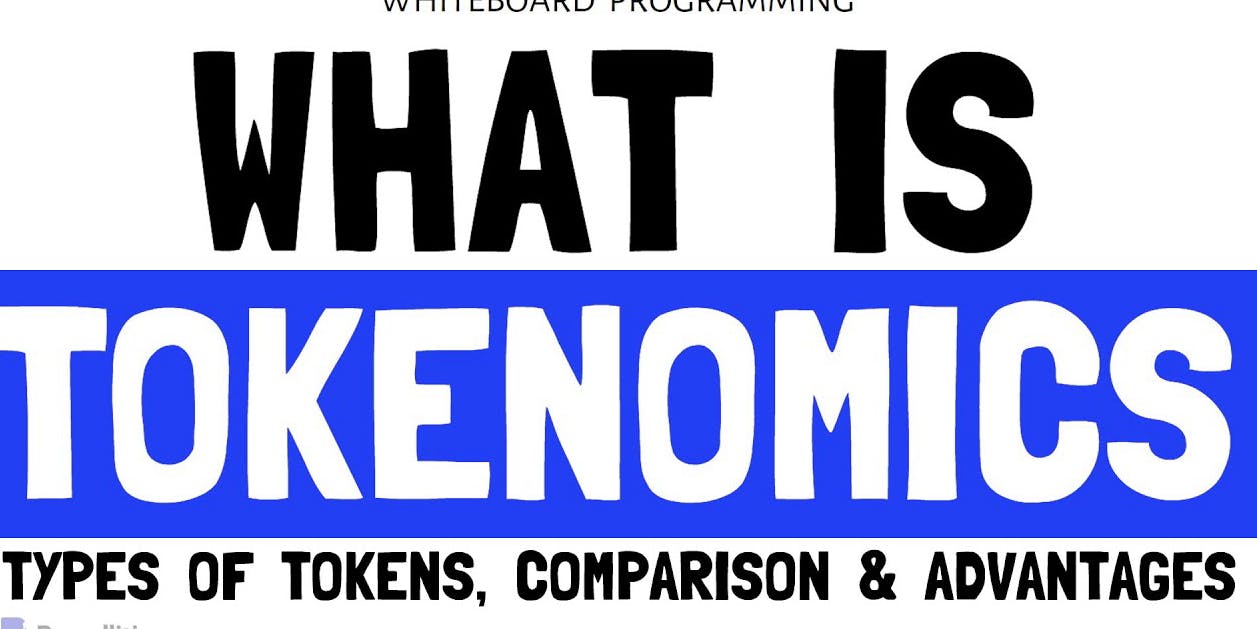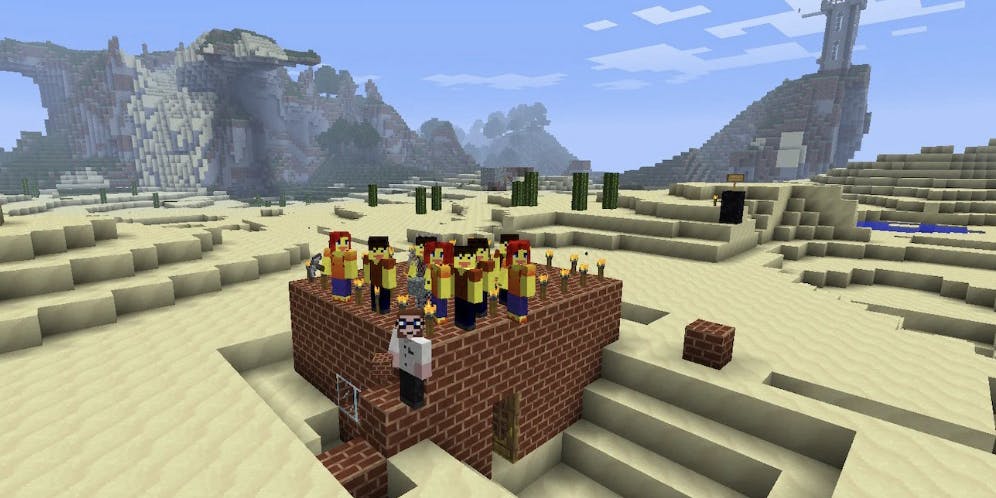
The Upcoming Cancun Upgrade, Reviewing Key Milestones in Ethereum's History
history of Ethereum | veDAO Research Institute
To this day, blockchain technology can still be said to be an emerging technology. Although the basic concepts related to blockchain (cryptography, decentralization, peer-to-peer networks and transactions) have been studied for decades, it was not until 2008 that Bitcoin After its birth, people believed that these concepts could indeed be combined to create usable products. Ethereum, in particular, did not appear in a public and usable form until 2015. Although the expected development timeline and specific details have changed, Ethereum continues to proceed as planned and continues to upgrade the protocol to ensure improved usability, security, functionality, and decentralization.
This year, Ethereum will undergo two important upgrades as planned, namely the Shanghai upgrade, which was completed on April 12, and the Cancun upgrade, which is expected to be carried out in the fourth quarter. According to the official Ethereum documents, since the release of the white paper in 2013, a total of 24 milestone events have occurred, most of which are fork upgrades, and the relatively important ones are 12 upgrades. This article will review and sort out the important hard forks and upgrades in the history of Ethereum, and introduce the changes that the Cancun upgrade may bring.
Frontier Upgrade - July 30, 2015

July 30, 2015, is the date when the genesis block of Ethereum is generated and the date when the first phase of Ethereum begins. The launch of Frontier marks the official launch of the Ethereum blockchain network. This stage is mainly for blockchain developers, and node participants participate in the form of mining. At this stage, uploading smart contracts is supported.
The Frontier protocol includes the following key features:
Block Reward: When miners successfully mine a block on the Ethereum blockchain, they will receive a reward in ETH. In the Frontier phase, the block reward for miners is 5 ETH per block.
Gas: In the early days after Frontier was released, the gas limit per block was hard-coded to 5,000 gas. Plainly speaking, this means that there will be no big action on the network. This leaves a buffer period for miners to start working on Ethereum and for early users to install clients. After a few days, the Gas cap is automatically lifted and the network can start processing transactions and smart contracts as planned.
Canary Contract: This contract is used to inform users which chains have been or are vulnerable to attacks. Canary contracts are assigned a value of 0 or 1. If the contract is assigned a value of 1, the client can recognize that this is an incorrect chain and avoid this invalid chain when mining. Essentially, these features of the Canary contract allow the Ethereum core development team to suspend the operation of the network if there is a problem with the network. In the early stages of Ethereum, the Canary contract was an extremely centralized but indispensable protection mechanism.
Usability: All developer operations are performed through the command line as there is no graphical user interface. The entire network is available, but the user interface is very crude and only those familiar with Ethereum and have operational experience will be able to use it.
The gas limit of each block was hard-coded to 5000 Gas in the Frontier version. Then the 5000 Gas limit was removed in the Frontier thawing upgrade two months later, and the default Gas price was set to 50gwei. And the difficulty bomb was introduced in this upgrade. The purpose of introducing the difficulty bomb is to provide the network with a mechanism to migrate from PoW to PoS. When the computing power is too high and miners cannot dig out any block, it will be There has never been a better time for the network to convert to PoS. It can be said that in the initial stage of Ethereum, there was a plan to switch to PoS.
Since then, Ethereum has officially entered the era of quasi-available PoW mining. At this time, the price of Ethereum is US$1.24 each.
Homestead Upgrade - March 14, 2016

The Homestead upgrade is the second major version released by Ethereum. It is the first hard fork of Ethereum and the date when the second phase of the roadmap begins. The most important feature in this version is the optimization of smart contracts and the introduction of new code for the smart contract language Solidity. In addition, the desktop wallet Mist was also released in this version, allowing users to hold/trade ETH and write/deploy smart contracts. Later, the Mist project announced its termination in early 2019.
The Homestead Upgrade is one of the earliest Ethereum Improvement Proposals (EIPs) implemented. It contains a total of 3 EIPs, namely 2, 7, and 8: EIP-2: Increase the cost of creating smart contracts through transactions from 21,000 Gas to 53,000 Gas. Previously, the cost of creating a contract through a contract (the recommended approach) was higher than the cost of creating a contract through a transaction. Due to the increased gas cost of creating contracts through transactions, EIP 2 incentivizes users to return to the method of creating contracts through contracts.
EIP-7: Added new function DELEGATECALL to facilitate code reuse. This opcode is similar to CALLCODE, except that it sends the sender and value from the parent scope to the child scope, that is, the call is created with the same sender and value as the original call.
EIP-8: It is a future-focused network upgrade plan improvement proposal that is forward compatible with the network protocol devp2p. This improvement ensures that all client software on the Ethereum network can adapt to future network protocol upgrades.
At this time, the Ethereum price is $12.5 each.
DAO Fork - July 20, 2016
In addition to planned Ethereum upgrades and hard forks, there is also an unplanned fork event that deserves to be remembered. In 2016, a decentralized autonomous organization project called The DAO raised $150 million by issuing tokens. In June, The DAO's contract was exploited by hackers, and ETH worth tens of millions of dollars was stolen by unknown hackers. Most participants in the Ethereum community decided to implement a hard fork to restore stolen ETH from wallets and patch vulnerabilities. However, the hard fork was not unanimously recognized by all participants in the community, and some participants continued to mine and trade on the original chain. The original chain from which the ETH was stolen and not recovered is known as Ethereum Classic (ETC). Since then, Ethereum has split up to form ETH and ETC. This is the reason why Ethereum has two networks.
At this time, the Ethereum price is $12.54 each.
Metropolis: Byzantium Upgrade - October 16, 2017
At this time, Ethereum has experienced two major milestone upgrades: Frontier and Homeland. According to the plan, the next step is the Metropolis upgrade. However, the Metropolis upgrade has a lot of content, so the plan was divided into two phases: Byzantium. and Constantinople.
This hard fork contains 9 improvement proposals (EIP 100, 658, 649, 140, 196, 197, 198, 211, 214). In addition to updates related to the underlying layers such as opcodes and smart contracts, it also postponed the “difficulty bomb” to a year and a half later and reduced the block reward from 5 ETH to 3 ETH. The block generation time is close to 30 seconds before the difficulty bomb is defused. Added the ability to make non-state change calls to other contracts; added some cryptographic methods to allow Ethereum's Layer 2 extensions.
At this time, the Ethereum price is $334.32 each.
Metropolis: Constantinople Upgraded - February 28, 2019
The second phase of the Metropolis upgrade, Constantinople, was originally scheduled to go online at block height 7.08 million in mid-January 2019. On January 15, an independent security auditing firm called ChainSecurity released a report stating that one of five major system upgrades would give attackers the opportunity to steal funds. In response to the concerns raised by the report, Ethereum core developers and other members of the community voted to hold off on the upgrade until the security issue is resolved.
In the end, the Ethereum Foundation decided to carry out the final step of 'Metropolis' on February 28, 2019, a hard fork called 'Constantinople', which included a total of 6 improvements: ensuring that the blockchain It will not be frozen before the PoS working mechanism is implemented; the Gas cost issue in the Ethereum Virtual Machine has been optimized; the interactive ability of address creation has been added. Interestingly, this upgrade will also include a hard fork called 'Petersburg' that will be carried out at the same time, removing a previous improvement proposal (EIP-1283) in Constantinople. In this 5 major update, in addition to technology-related adjustments, the difficulty bomb is postponed again for 12 months and the block reward is reduced from 3 ETH to 2 ETH.
At the same time, a new instruction CREATE2 introduced in EIP1014 can pre-calculate the contract address before the contract is officially deployed, thereby introducing the concept of a state channel similar to the Bitcoin Lightning Network to Ethereum, which can be calculated off-chain first. Deploy the corresponding contract to the on-chain settlement.
At this time, the Ethereum price is $136.29 each.
Istanbul Upgrade - December 8, 2019
Ethereum 2.0 plans to launch the first phase (phase 0) in 2020. Before 2.0 is fully launched, most users and developers may mainly use Ethereum 1.X, so subsequent updates to 1.X are also very important. . This Istanbul hard fork was activated on December 8 and includes 6 improvements: continue to optimize the Gas cost issue in the Ethereum Virtual Machine; improve the resilience to distributed denial-of-service attacks; improve the verification mechanism based on SNARKs and STARKs The developed Layer2 expands the performance of the solution; enables interoperability between Ethereum and Zcash; and allows Ethereum smart contracts to introduce more creative features.
Vitalik Buterin said that after this upgrade, ordinary transactions per second (TPS) will increase by about 5% to 10%, and for Layer 2 technology Rollup, it can be increased by about 4 times. At this time, the Ethereum price is $151.06 each.
Muir Glacier Upgrades - January 2, 2020
Less than a month after completing the Istanbul upgrade, Ethereum underwent an emergency temporary upgrade. It is very rare to conduct two hard forks within a month. The reason is that users and developers continue to discover recent Ethereum blocks. The generation interval has been slightly increased, which will cause the TPS of the Ethereum network to decrease. Ethereum developers have discussed, and some people have proposed to conduct a hard fork code-named 'Muir Glacier' at block height 9,200,000 to remove the difficulty bomb, which is expected to occur around December 31, 2019. According to data from developers in the discussion group, Ethereum's block generation time will continue to grow until the difficulty bomb is removed, and may reach 25 to 30 seconds around January 6.
At this time, the Ethereum price is $127.18 each.
Berlin Upgrade - April 15, 2021

Starting from this version, the upgrade code names will follow the order of the Ethereum Developer Conference Devcon, and the first Devcon 0 was held in Berlin. Ethereum has previously planned many improvements for the Istanbul upgrade, but due to various reasons, some of the improvement proposals that did not have time to be placed in Istanbul will be moved to Berlin. This time, the Gas cost issue in the Ethereum Virtual Machine is optimized; and support for multiple transaction types is added.
At this time, the Ethereum price is $2,454 each.
London Upgrade - August 5, 2021

This upgrade involves a total of five proposals: EIP-1559, EIP-3198, EIP-3529, EIP-3541 and EIP-3554. One of the EIPs that has the greatest impact on Ethereum is EIP1559. This proposal aims to change the existing Ethereum fee structure, split the fee into a base fee (basefee) and a miner fee, and destroy part of the base fee. to reduce the circulation of ETH.
It directly changes the economic model of Ethereum. Previously, block packaging was an auction mechanism, and the one with the highest gas price got it all and gave it all to the miners. EIP1559 divides the gas fee into two parts, one part is given to the miners, and the other part is burned, thereby converting the ether ushered in an era of deflation.
At this time, the Ethereum price is $2,621 each.
The Merge - September 15, 2022
This upgrade (merger) is an upgrade that directly modifies the execution layer and consensus layer of Ethereum. It is an important upgrade that transforms the Ethereum main network from a PoW consensus mechanism to a PoS consensus mechanism. This upgrade has brought some rule changes to the Ethereum network. The specific changes are as follows:
Verification node change: The original miner node will be replaced by a verification node. The verification node needs to have 32 ETH as a deposit and run the corresponding software to participate in network verification and package blocks.
Changes in block rewards: The original block rewards will be cancelled, and will be replaced by transaction fees.
Changes to the transaction fee mechanism: In the new version, transaction fees will be paid directly to the validator nodes instead of the Ethereum Foundation.
Improved dynamic fee mechanism: A new feature called 'EIP-1559' has been added to the new version, which can dynamically adjust the fee price, allowing users to complete transactions faster and reduce excessive fees.
Optimization of state storage methods: The new version uses a technology called 'Rollups' to store large amounts of data on the side chain and aggregate it to the main chain, thus reducing the burden on the main chain and improving the efficiency of the entire system. and scalability.
Improved contract execution methods: The new version adds a virtual machine called 'EVM 384', which can improve contract execution efficiency and security.
In general, the Ethereum Paris upgrade has greatly improved the scalability and efficiency of the Ethereum network by improving the consensus mechanism, optimizing the transaction fee mechanism, improving state storage methods, and improving contract execution efficiency.
At this time, the Ethereum price is $1,472 each.
Shanghai Upgrade - April 12, 2023

The Shanghai upgrade will be the first major upgrade of the Ethereum network after the merger, and is also an important milestone on the Ethereum roadmap. The main changes brought about are three points:
-
The Shanghai upgrade unlocks the staking and withdrawal function of Ethereum. This is not only conducive to maintaining the vitality of the Ethereum network, but also conducive to the future sustainable development of Ethereum and continuing to attract more validators into the Ethereum network.
-
Reducing the Gas fees for Layer-2 solutions running on the Ethereum blockchain, which to a certain extent makes Ethereum faster and cheaper, and the Shanghai upgrade will further optimize the Gas fees for transactions on Ethereum.
-
As the largest blockchain network supporting smart contracts, Ethereum’s Shanghai upgrade will maintain Ethereum’s leading position in this field by introducing EOF (EVM Object Format).
At this time, the Ethereum price is $1,917 each.
Cancun Upgrade - Q4 2023 (Estimated)
The Cancun upgrade is an additional upgrade to the ETH blockchain after the Shanghai upgrade, with EIP-4844 and possible EIP-6969. It mainly promotes Ethereum L2 to achieve the goals of cost reduction and speed improvement: by then, Ethereum Layer 2 The speed is increased by 10 times, and may even be increased by 100 times at a lower cost.
The cost of Ethereum Layer 1 has always been high, and necessary improvements are urgently needed to reduce the overall operating cost. Currently, the scaling solutions on Ethereum are mainly Layer 2 Rollups. Rollups indeed help users save a lot of Gas Fees. For example, on behalf of the project Optimism, the regular cost of Gas Fee is only 0.001 gwei, which is far lower than the regular cost of the Ethereum layer 1 main network; ZK Rollups' solution has better data compression performance , and does not need to include signature data, the cost is lower, and can even be reduced to one percent of the Ethernet Layer 1 main network. However, for a wider range of users, even after the Rollups solution, Gas Fee is still a relatively expensive burden. In addition, Ethereum's efficiency in processing parallel transactions is still low, and it can only handle double-digit transaction volume per second. These require new improvements to help improve scalability.
Sharding is a powerful improvement method to solve the above problems, but it is not yet implemented in Ethereum. The timely proposal of the improvement plan EIP-4844 is to find a way between solving the above needs and implementing the sharding upgrade. A trade-off plan that can be applied to Ethereum at this stage is proposed to lay an early technical foundation for Ethereum to achieve overall data sharding in the future. Therefore, EIP-4844 is also known as 'Proto-danksharding'.

EIP4844 introduces a new transaction type to Ethereum, which can store data at a cheaper cost in a space called Blob, so that the data previously stored in Layer1 by Layer2 can be stored in the Blob, greatly reducing the cost of Layer2. cost.
In addition to the much-anticipated EIP-4844, the improvement proposals that have been confirmed for implementation in this Cancun upgrade also include:
EIP-1153: Add Transient Storage Opcodes. Transient storage is a solution specifically designed to solve the internal communication of blocks.
EIP-6780: Modify the function of the SELFDESTRUCT opcode to prepare for the future application of the Verkle Tree architecture in Ethereum.
In addition to ETH itself, there are some projects worthy of deployment under the Cancun upgrade:
Layer2
The biggest beneficiary of the Cancun upgrade is undoubtedly Layer 2. Arbitrum and Optimism, which have sufficient first-mover advantages and are the leaders of L2, deserve attention. At the same time, leading applications in the Arbitrum ecosystem such as GMX, RDNT, and Magic will also follow the L2 The outbreak has lifted all boats. In addition, Metis, which is built and improved on OptimisticRollup, and projects that imitate Optimism such as Boba Network are also expected to benefit from the Cancun upgrade.
ZK-Rollups
As a more advanced solution considered by the industry, zkRollup is also expected to shine with the upgrade in Cancun. zkSync, StarkNet and Scroll are the three most well-known projects in this field; these three projects have not yet issued coins, but their potential cannot be underestimated.
zkSync is an extension solution based on the ZK-Rollup architecture developed by Matter Labs. The 1.0 mainnet is mainly for payment purposes and the general 2.0 testnet is fully compatible with EVM. Recently, zkSync has also upgraded its 2.0 entrance, which supports the use of any token to pay network fees, greatly improving user flexibility.
Starknet is a decentralized Validity-Rollup that runs on Ethereum as an L2, allowing any application to scale massively without compromising Ethereum’s composability and security.
Scroll is a zkRollup based on zkEVM on Ethereum. As an L2 solution, it solves the congestion problem of Ethereum.
other
In addition to the above two categories, Cancun's upgrade will also benefit other concentrated types of projects. Including cross-chain protocols with similar functions to L2; due to the short storage time of Blob data, it will benefit the data availability layer project. Representatives include: Layerzero is currently the most popular cross-chain protocol. It is a cross-chain communication protocol that can transfer 'information' on one chain to another chain and achieve decentralized information cross-chain services by deploying a series of smart contracts (Endpoints) on the chain.
Celestia is a data availability layer project. Based on the Cosmos architecture, it provides data layer and consensus layer for other L1 and L2 to build a modular blockchain. The principle is the same as the Ethereum sharding solution, which can reduce Rollup's current transaction fee bottleneck 'data storage cost' to a certain extent.
With the implementation of EIP-4844, L2 will become more competitive compared with other L1s, and its future development prospects will be relatively large. In addition to greatly reducing L2 transaction fees, EIP-4844 also provides good soil for future applications of Danksharding to easily implement data sharding in the future. With lower transaction fees, better transaction experience, and even more application scenarios, the Cancun upgrade will become a turning point for Ethereum L2.
Follow us
veDAO is a decentralized investment and financing platform led by DAO. It will be committed to discovering the most valuable information in the industry, and is keen to explore the underlying logic and cutting-edge tracks in the field of digital encryption, allowing every role in the organization to fulfill their responsibilities and Get rewarded.
Website: http://www.vedao.com/ Twitter: https://twitter.com/vedao_official Facebook: bit.ly/3jmSJwN Telegram: t.me/veDAO_zh Discord: https://discord.gg /NEmEyrWfjV
🔴Investment is risky, the project is for reference only, please bear the risk at your own risk🔴



